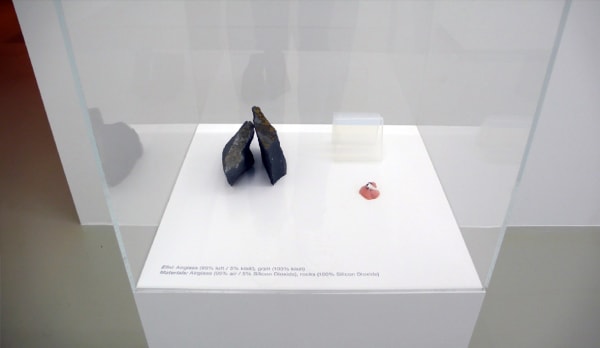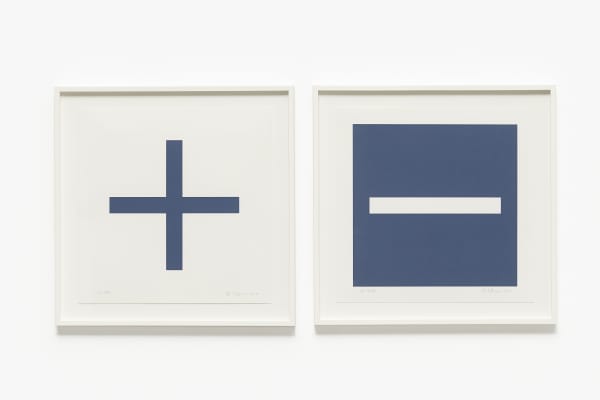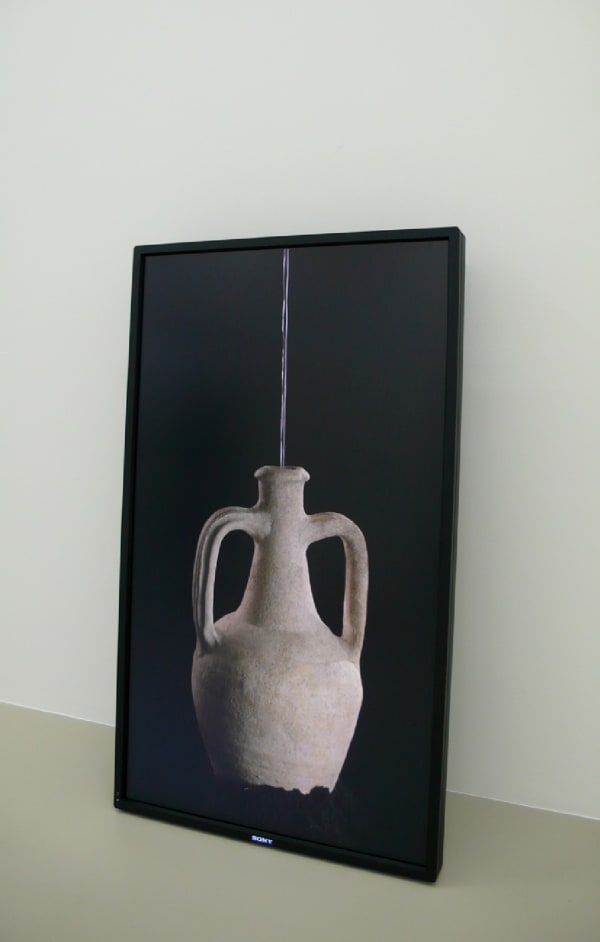HREINN FRIÐFINNSSON: More or Less
Hreinn Fridfinnsson is one of the most surprising actors of European Conceptual Art. Born in rural Iceland in 1943, he has spent the last 40 years in Amsterdam. His vocabulary, underscored by a delicate sense of humour, encompasses dreams, folklore, doubling and perceptual tricks. By using different media in his research, he utilises an economy of means to evoke a rich panoply of associations. This exhibition exemplifies how Fridfinnsson consistently created art that joins – like flesh to spirit – the sensuously expressive qualities of materials to an animating conceptual core.
Fridfinnsson’s primary materials are by nature frail or illusory: glass, gold leaf, paper, stones, mirrors and small everyday objects. One could characterize his artistic attitude as a constructive interpretation of humble things, one which transforms the familiar into the new while also incorporating the very process of transformation into the work. Standing amid Fridifinnsson’s installations, one finds oneself in the presence of things that wouldn’t normally take up much space, but which have suddenly expanded by means of the artist’s interventions.
A recent installation entitled “Study in Black” (2009), combines a rectangular black mirror with an artificial horizon on a pedestal. Beyond their visual immediacy these two mirrors play an important role in the definition of space both in scientific and philosophical terms. The fascination for the physicality of the two objects reflects a constant interest in the multi-layered narratives within.
Fridfinnsson is always able to fabricate simple and poetic equations out of objects and situations to create discreet, even self-effacing, reactions. In the development of his work, the surface of the surrounding world is always present as the subject matter, both in form and content.
Two different versions of ”Jar” are also works playing with reflection, perspective, and illusion; the combination of these elements creates meanings that evoke the complexity and ambiguity of the idea of space. The glass objects are included in two complementary mirrored corners, deploying the eyeâs tendency to “correct” such an image and interpret a continuity where in reality there is a fracture. In this case, Fridfinnsson presents the viewer with a visual conundrum: what one sees stubbornly conflicts with what one knows. The brain-bending effort to resolve this conflict awakens awareness of the connection between the mind and the eye and the complex process of interpretation itself. Again, a geometric formalism and perspectival inquiry poignantly merge into a meditation on the factuality of time, place, and repetition.
It is unlikely that anyone would mistake a Fridfinnsson piece for the work of anyone else. While many of Fridfinnsson’s post-Minimalist and Conceptualist contemporaries have created visually dry and detached documents of installations, performances and earthworks, his own interventions always have a seductive poetic allure. His work is aloof, delicate and, in an unhurried way, deeply and truly radical.
-Gyonata Bonvicini













